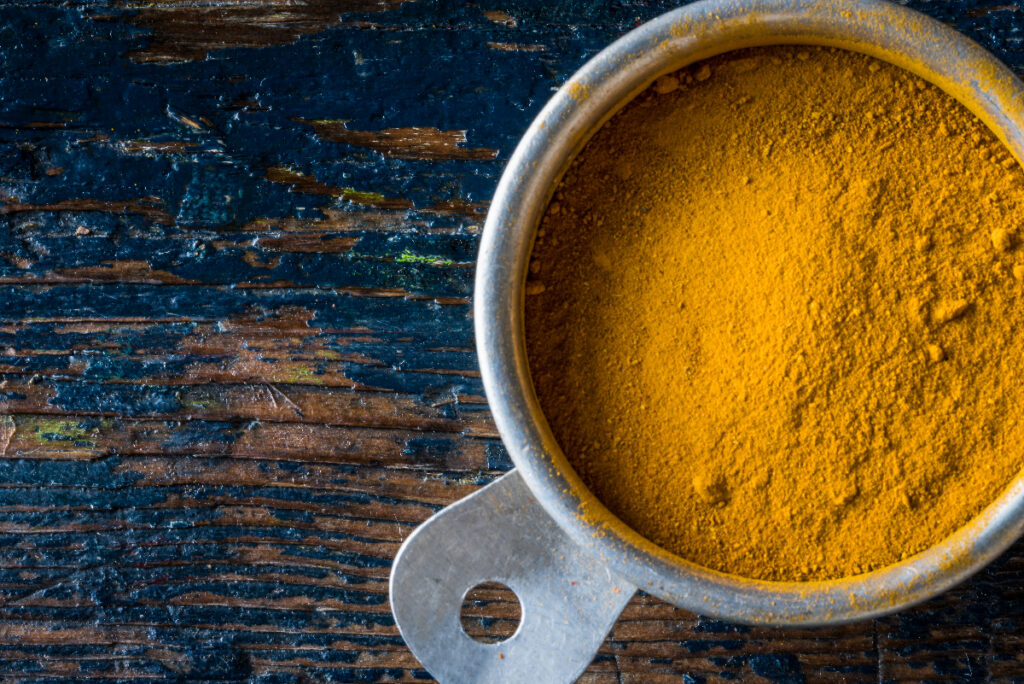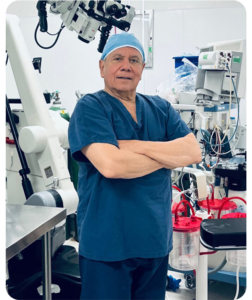
Studies have shown that turmeric may help to reduce inflammation in the upper and lower back which in turn will help to reduce back pain; however, Turmeric will not help to fix herniated discs or sciatica. Turmeric helps to reduce inflammation because it reduces the body’s natural inflammatory response. Turmeric also helps to improve your immune system.
Back pain is one of the most common health complaints in the United States. Whether it’s from injury, inflammation, arthritis, or disc degeneration, many patients look for safe, natural remedies to manage their symptoms especially when long-term medication use isn’t ideal.
What Is Turmeric and Why Is It Important?
Turmeric is a yellow spice derived from the root of the Curcuma longa plant, a relative of ginger. It’s been used in traditional Ayurvedic and Chinese medicine for centuries commonly applied to wounds, inflammations, and joint issues. The key compound within turmeric is curcumin, which gives the spice its distinct color and potential healing properties.
Curcumin is believed to have anti-inflammatory, antioxidant, and even mild pain-relieving effects. These properties have made it a subject of intense research in the treatment of arthritis, chronic pain, and yes back pain.
Understanding Back Pain: The Role of Inflammation
Back pain can stem from a variety of causes:
- Muscle and ligament strain
- Herniated or bulging discs
- Spinal stenosis (narrowing of the spinal canal)
- Osteoarthritis or degenerative disc disease
- Nerve irritation or sciatica
Most of these conditions share a common underlying factor inflammation. Inflammation is the body’s natural response to injury or irritation. But when it becomes chronic, it can cause tissue damage and worsen pain.
This is where turmeric’s potential benefit becomes relevant.
How Does Curcumin Work?
Curcumin is known to block specific molecules in the body that cause inflammation. It works by:
- Inhibiting enzymes like COX-2 (the same enzyme targeted by NSAIDs)
- Reducing levels of pro-inflammatory cytokines (like IL-6, TNF-alpha)
- Neutralizing harmful free radicals that damage cells
- Suppressing NF-kB, a protein complex involved in chronic inflammation
curcumin slows down the chemical processes that cause swelling, stiffness, and pain in inflamed tissues—including those in your back.
Is Turmeric Safe for Spine Patients?
Generally speaking, turmeric and curcumin are safe when taken in appropriate doses. Most studies report no serious side effects when used short-term at doses up to 1500 mg of curcumin per day.
However, very high doses (especially over 8 grams/day) or long-term use may cause:
- Upset stomach
- Nausea or diarrhea
- Rare cases of liver irritation (especially with high-absorption formulas)
If you’re taking blood thinners, chemotherapy, or medications that affect the liver, consult your doctor before adding turmeric to your regimen. Turmeric can interfere with how some medications are metabolized.
Curcumin’s Biggest Challenge: Absorption
Curcumin is poorly absorbed by the body on its own. That’s why you’ll often see supplements combined with piperine (black pepper extract). Piperine can boost curcumin absorption by up to 2000%.
Other forms of curcumin are available too such as liposomal, nanoparticle, or phospholipid-bound versions which also improve bioavailability.
Here’s a simple rule:
- For general back inflammation: Start with 500 mg of curcumin (with piperine), once or twice daily.
- Take it with food, ideally with a bit of fat, to further help absorption.
Remember, culinary turmeric (used in cooking) contains only about 3% curcumin by weight, so it’s unlikely to produce therapeutic effects unless taken in concentrated supplement form.
Should Turmeric Replace Traditional Treatment?
No. While turmeric may offer support for reducing inflammation, it should not be considered a replacement for medical treatment or physical therapy. It’s best used as a complementary tool within a broader pain management plan.
That plan might include:
- Supervised physical therapy
- Strengthening and mobility exercises
- Ergonomic adjustments at work/home
- Injections or medications (when necessary)
- Lifestyle improvements (like weight loss, posture)
Think of turmeric as one helpful part of the toolbox—not the whole solution.
Final Thoughts
If you’re a back pain sufferer looking for non-pharmaceutical options to manage inflammation, turmeric may be worth considering. It offers a relatively safe, natural way to target inflammatory pathways in the body.
Resources
- Mayo Clinic: Turmeric and Pain Relief
- NIH – National Center for Complementary and Integrative Health (NCCIH)
- NIH LiverTox: Turmeric Clinical Safety Review
- Frontiers in Immunology: Curcumin Meta-Analysis in Arthritis
- Cleveland Clinic: Back Pain Overview
- Journal of Back and Musculoskeletal Rehabilitation – 2025 RCT on Turmeric-Boswellia
- Medicine (Baltimore) – RCT Comparing Turmeric to Acetaminophen
- Arthritis Foundation: Curcumin vs. NSAIDs

